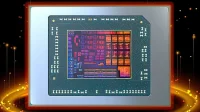AMD, one of the largest chip makers in the world, has shown off its future plans for desktop and laptop processors, and its lineup looks pretty interesting. The setup includes a roadmap for AMD’s Zen 4 and Zen 5 core architectures, which will become available in the company’s laptop APU offerings in 2023 and 2024. on Zen 4 too.
AMD Phoenix and APU Strix
For starters, AMD’s plans for 2023 include a 4nm APU dubbed the Phoenix Point. The latter will add 4nm manufacturing nodes to its cores, which will include the Zen 4 core architecture for CPUs and the RDNA 3 core architecture for GPUs, as part of next year’s Phoenix Point APU lineup. The chips will support LPDDR5 memory and PCIe 5 slots, thus offering enough updated internals to match their performance specs. AMD has clarified that the APUs will be offered with TDPs up to 45W in terms of power consumption.
Overall, this suggests that Phoenix Point APUs will be able to offer performance suitable for thin and light gaming laptops. Reports suggest the new APUs will also ship with more compute units in their RDNA 3 based GPUs – and up to eight cores as part of Ryzen 7000 series APU offerings. Consumer Electronics Show 2023 and will be available for laptops next year.
The next offering will be the Strix Point APUs, which will offer a second level of upgrade over the Phoenix Point. AMD hasn’t specified exactly which core fabrication node will use the Strix Point CPU and GPU cores, instead leaving everything in the ambiguous “advanced node”. This suggests that while AMD is leaving an open option for its 2024 laptop APU line based on a 3nm manufacturing node, it could instead be an advanced 4nm node cycle that will be introduced at Phoenix Point.
In any case, Strix Point will ship with AMD Zen 5 core architecture and RDNA 3+ GPU core architecture. Reports suggest that Strix Point is expected to get a new level of cache, L4, that will take care of the system buffer, which in turn will improve background processing, load times, and overall longevity of the processors in question. However, Strix Point is still far away – and it will be described in detail at a later stage.
Threadripper 7000 next year
The legendary AMD Threadripper Desktop Processor (HEDT) returns in 2023. Based on the Zen 4 desktop core architecture and TSMC’s 5nm process, the Ryzen Threadripper 7000 series of ultra-high desktop and extreme workstation processors will be released next year. As part of its lineup, the Threadripper 7000 will have up to 96 cores and 192 threads.
Interestingly, Threadripper has the same number of cores as the EPYC Genoa enterprise-class processors, which suggests that they can share computing functions with each other. AMD will also be developing a new socket for the Threadripper 7000, which may be called TR5 or SP5r2, according to reports. It will also mark the end of the TR4 socket that has so far served Zen 2 and Zen 3 based Threadripper processors for so many years.
Other features, such as DDR5 memory support and PCIe 5.0 connectivity for future acquisition of such an expensive processor, are also expected to be part of the Threadripper 7000 desktop processor, due by mid-2023.


